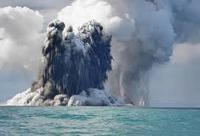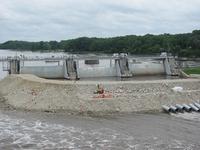-
Demand for cyberattack insurance grows, but challenges remain
The surge in cyberattacks against the private sector and critical infrastructure has led to a growth in demand for cyber insurance; yet most insurers are unable properly to assess their clients’ cyber risk, let alone issue the appropriate pricing for their cyber coverage.Insurers which traditionally handle risks like weather disasters and fires, are now rushing to gain expertise in cyber technology.On average, a $1 million cyber coverage could cost $20,000 to $25,000.
-
-
Training volcano scientists from around the world to predict, respond to eruptions

Scientists and technicians who work at volcano observatories in eleven countries visited the U.S. Geological Survey’s Hawaiian Volcano Observatory earlier this month to learn techniques for monitoring active volcanoes. The International Training Program in Volcano Hazards Monitoring is designed to assist scientists from other nations in attaining self-sufficiency in monitoring volcanoes and reducing the risks from eruptions.
-
-
Mapping Florida sinkholes
Sinkholes are common in Florida because of porous rock underground, such as limestone, which holds water. Over time, acid in the water dissolves the rock, creating a void. The Florida Geological Surveyand Florida Department of Emergency Managementare making progress on creating a statewide map showing where sinkholes are most likely to form. Florida received more than $1 million in federal funding last year to conduct a three-year study which would eventually help emergency planners predict where sinkholes are likely to develop, especially after large rainstorms.
-
-
California braces for worst wildfire season in memory
California Department of Forestry and Fire Protection(Cal Fire) is bracing for one of the longest and most difficult fire seasons in memory. A recent addition of $23 million to the emergency wildfire budget for the fiscal year that began 1 July, brings the department’s budget total to $209 million. “That’s just the first week, and we still have 51 more weeks to go,” said Daniel Berlant, spokesman for Cal Fire. “We’re not even to the peak of the fire season yet.”
-
-
Emergency readiness of health-care providers

In 2013 the Centers for Medicare and Medicaid Services(CMS) proposed new preparedness requirements for hospitals and sixteen other types of health care providers, including home health agencies, nursing homes, hospices, transplant centers, and community mental health facilities, to mitigate natural and man-made disasters. Health-care providers say these requirements are too costly.
-
-
New materials, designs needed to fortify infrastructure against extreme weather
As cities prepare for the effects of climate change, higher temperatures for longer periods of time and a dramatic change in humidity and rainfall pose the highest risk to public infrastructure, scientists say. Buildings, roads, and bridges which were built for one set of climate conditions will have to function in another. Researchers say that analysis of changing conditions in Alaska, for example, shows that in thirty or forty years the state would have to rebuild roads every eighteen months unless new designs and materials were adopted.
-
-
Silicon Valley braces for floods, storm surges caused by sea level rise
A new analysis found that $36.5 billion in property and at least 145,000 California residents could be directly affected in the next thirty years from flooding caused by sea level rise. San Mateo County, home to major corporations including Facebook, Oracle, and Genentechin Palo Alto, and the low-income population of East Palo Alto, would be the most affected.
-
-
Earthquake researchers get online primer for simulation method
Researchers now have access to expert instruction for an emerging simulation method to study seismic effects on structures and to design buildings that better withstand strong earthquakes. The National Science Foundation’s (NSF) George E. Brown Jr. Network for Earthquake Engineering Simulation (NEES) is providing a primer on its NEEShub. he primer explains how to use hybrid simulations, methods that are helping researchers study the effects of earthquakes on buildings and other structures.
-
-
Design standards for dams are effective for earthquakes: study
There has long been a concern among civil engineers that dams could fail days or weeks after an earthquake, even if no immediate evidence of a problem surfaced. Their concern has focused on possible cracks at the interface between the concrete section of a dam and the soil embankments at the dam’s sides, and on how the soil filters nestled amidst the embankments would fare. Soil filters consist of coarser grain soils than the soil used in the dam’s impervious core, and their purpose in the event of a crack in the soil, is to prevent the finer core soil particles from rapidly eroding and flushing through the filter. Since soil filters were instituted, their design standards have been based on experimental studies without detailed and validated computer modeling of the soil grains — until now.
-
-
Assessing the damage of runaway barges at the Illinois River lock and dam

It takes a synchronized lock and dam system — operating like a motorized flight of stairs on the Illinois River, using gravity to move the water — to maintain a minimum depth for boat traffic. A disastrous domino effect occurred on 19 April 2013, when heavy rain and runoff, strong winds, and river currents resulted in seven unmoored barges crashing into the dam at Marseilles, Illinois. Researchers say that the system of locks and dams on the Illinois River is vulnerable to changing climate and weather extremes. These more frequent and unpredictable conditions can cause shipping accidents, damage to lock and dam systems, streambank erosion, shipping accidents, and local flooding.
-
-
U Iowa to spend $4 million on flood protection
Facing an Iowa River which breaches its banks and advances on nearby buildings and roadsin Iowa City, the University of Iowa(UI) plans to spend as much as $4 million to secure its property. The figure covers the cost of setting up and taking down HESCO barriers near vulnerable buildings. “It’s worth it to spend $4 million to prevent tens of millions of dollars in damage and all the disruption that could be caused for students,” said UI spokesman.
-
-
Seattle builds resiliency in the face of changing climate
The federal government’s National Climate Assessment, released in May, detailed the region-by-region effects which includes water shortages, sea-level rise, and more frequent wildfires. Most American cities fall short on climate change preparation when compared to several major cities around the world. A survey conducted by MIT reported that globally, “the U.S. has the lowest percentage of cities engaged in (climate change) assessments and planning.” Seattle has decided it needs to act, and act now, to make itself more resilient in the face of a changing climate.
-
-
Microgrids offer cities resiliency, reliability, accessibility
A majority of the world’s population now lives in cities, which consume 75 percent of the world’s resources and emit most of its greenhouse gases. The United Nations estimates that by 2050, an additional three billion people will move into these dense, resource-intense urban environments. The focus in cities like New York or New Orleans is on building infrastructure to make cities more resilient when faced with extreme weather or natural disasters — by providing backup power during outages, as well as helping to ease systems back online as outages end. Microgrid researchers are taking up this challenge by developing an energy solution with the potential to strengthen all three critical factors of energy in a livable city: resiliency, reliability and accessibility.
-
-
Firefighters mull using drones in fighting wildfires
Federal wildland firefighting officials are exploring the deployment of drones to assist in surveillance and reconnaissance missions during a wildfire. Drones sent to survey fire patterns during a wildfire could help keep firefighters out of risky situations by providing real-time information to officials on the ground. Few wildfire officials have used drones in the line of duty, and managers with the U.S. Bureau of Land Management(BLM) and U.S. Forest Servicesay that while the technology has potential, agencies do not have the budget and have not developed protocols to integrate drones into regular firefighting operations.
-
-
Anticipating and addressing the knock-on effects of crisis situations
Crisis situations such as an EU-wide black-out, or cross-border flooding in the Netherlands and Germany, say, can have devastating repercussions. A well-known example of such an effect is the meltdown of Fukushima’s nuclear reactors in Japan, after the power plant was hit by a tsunami, which in turn was triggered by an earthquake. Being able to anticipate such cascade effects — and put in place effective emergency measures — can help avoid catastrophe and save lives. This is why the three-year EU-funded FORTRESS (Foresight Tools for Responding to cascading effects in a crisis) project was launched in April 2014; in order to identify and better understand their cause.
-
More headlines
The long view
The Surprising Reasons Floods and Other Disasters Are Deadlier at Night
It’s not just that it’s dark and people are asleep. Urban sprawl, confirmation bias, and other factors can play a role.
Why Flash Flood Warnings Will Continue to Go Unheeded
Experts say local education and community support are key to conveying risk.
